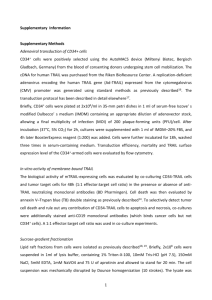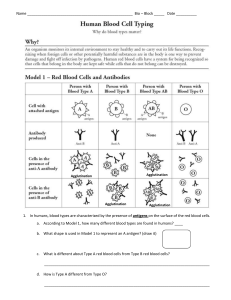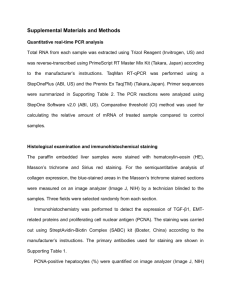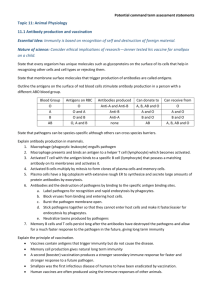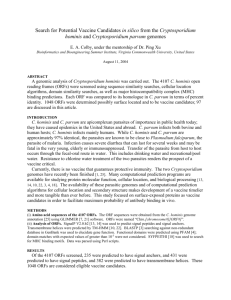Supplemental Digital Content 1 Supplemental Materials and
advertisement
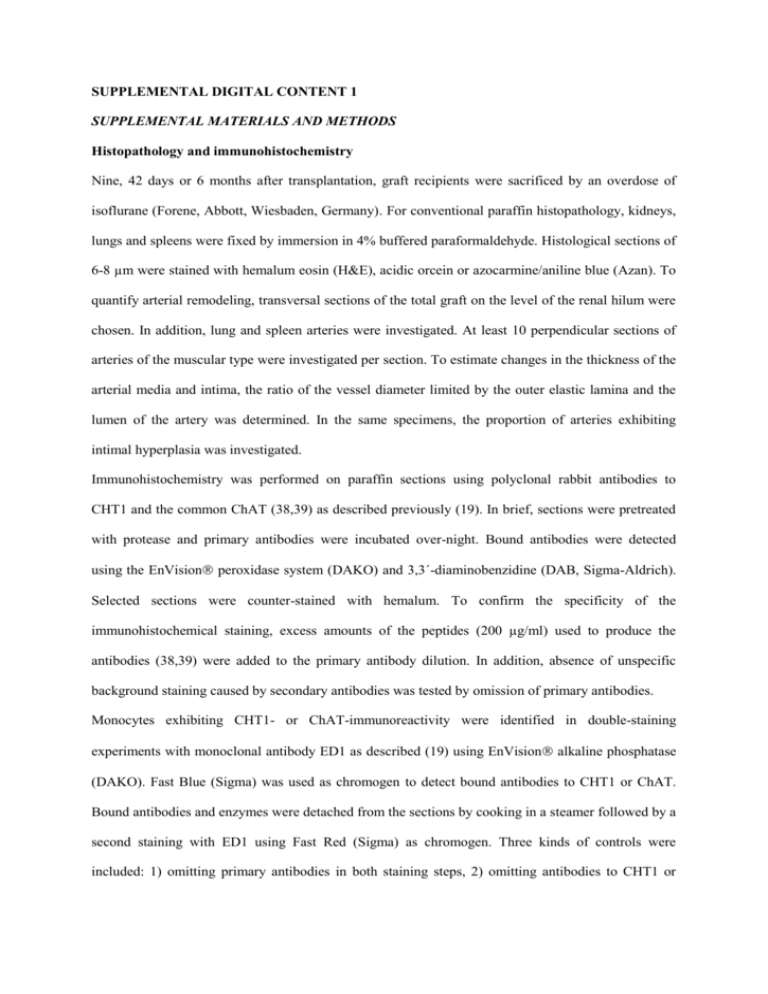
SUPPLEMENTAL DIGITAL CONTENT 1 SUPPLEMENTAL MATERIALS AND METHODS Histopathology and immunohistochemistry Nine, 42 days or 6 months after transplantation, graft recipients were sacrificed by an overdose of isoflurane (Forene, Abbott, Wiesbaden, Germany). For conventional paraffin histopathology, kidneys, lungs and spleens were fixed by immersion in 4% buffered paraformaldehyde. Histological sections of 6-8 µm were stained with hemalum eosin (H&E), acidic orcein or azocarmine/aniline blue (Azan). To quantify arterial remodeling, transversal sections of the total graft on the level of the renal hilum were chosen. In addition, lung and spleen arteries were investigated. At least 10 perpendicular sections of arteries of the muscular type were investigated per section. To estimate changes in the thickness of the arterial media and intima, the ratio of the vessel diameter limited by the outer elastic lamina and the lumen of the artery was determined. In the same specimens, the proportion of arteries exhibiting intimal hyperplasia was investigated. Immunohistochemistry was performed on paraffin sections using polyclonal rabbit antibodies to CHT1 and the common ChAT (38,39) as described previously (19). In brief, sections were pretreated with protease and primary antibodies were incubated over-night. Bound antibodies were detected using the EnVision peroxidase system (DAKO) and 3,3´-diaminobenzidine (DAB, Sigma-Aldrich). Selected sections were counter-stained with hemalum. To confirm the specificity of the immunohistochemical staining, excess amounts of the peptides (200 µg/ml) used to produce the antibodies (38,39) were added to the primary antibody dilution. In addition, absence of unspecific background staining caused by secondary antibodies was tested by omission of primary antibodies. Monocytes exhibiting CHT1- or ChAT-immunoreactivity were identified in double-staining experiments with monoclonal antibody ED1 as described (19) using EnVision alkaline phosphatase (DAKO). Fast Blue (Sigma) was used as chromogen to detect bound antibodies to CHT1 or ChAT. Bound antibodies and enzymes were detached from the sections by cooking in a steamer followed by a second staining with ED1 using Fast Red (Sigma) as chromogen. Three kinds of controls were included: 1) omitting primary antibodies in both staining steps, 2) omitting antibodies to CHT1 or ChAT and 3) omitting ED1. Sections were evaluated with an Olympus BX51 (Hamburg, Germany) microscope and the analySIS software (Olympus). RNA isolation and RT-PCR Total RNA was isolated from 5x106 intravascular mononuclear leukocytes from control kidneys, isografts and allografts using the RNeasy® Mini Kit (Qiagen, Hilden, Germany). As a positive control total RNA was isolated from the trachea of healthy LEW rats. Additionally, RNA was isolated from the spinal cord using the RNeasy® Lipid Tissue Mini Kit (Qiagen, Hilden, Germany). One µg RNA was reversely transcribed using the M-MLV H- Reverse Transcriptase and 1 µg random hexamer primers (Promega, Mannheim, Germany). Quantitative RT-PCR was performed in duplicates in an iCycler iQ, real-time PCR system (Bio-Rad Laboratories Inc., München, Germany) using IQTM SYBR Green Supermix (Bio-Rad, München, Germany). Primer sequences were published before (19), synthesized by MWG Biotech (Ebersberg, Germany) and used at a concentration of 0.6 µM. PCR included initial denaturation for 8 min at 95°C, followed by 40 cycles of 25 s at 95°C, 25 s at 60°C, and 25 s at 72°C. To evaluate the PCR products, the melting curves were analyzed, the products were separated on agarose gels and the products were sequenced (MWG Biotech). Controls omitting the RT step or replacing the template by water were always performed to exclude false positive results. The data were calculated as arbitrary units by the equation 2-ΔCT, where ΔCT is the difference in CT values between the gene of interest and PBGD. The mean of the expression values obtained for controls was set to one arbitrary unit. Individual values including controls were calculated accordingly. Gel electrophoresis and immunoblotting Sample preparation, SDS-polyacrylamide gel electrophoresis and immunoblotting with guinea pig antibodies to CHT1 and rabbit antibodies to common ChAT (38,39) were performed as described (19). To confirm the specificity of the staining, excess amounts of the peptides (200 µg/ml) used to produce the antibodies (38,39) were added to the primary antibody dilution. After staining for CHT1- or ChAT-immunoreactivity, membranes were incubated with mouse antibodies to GAPDH (Novus Biologicals, Littleton, CO), 1:20000. Bound antibodies were visualized with horseradish peroxidaseconjugated secondary antibodies (DAKO, Glostrup, Denmark) using the chemiluminescent reagent Lumi-Light Western blotting substrate (Roche, Mannheim, Germany). Densitometric analyses were performed using a digital gel documentation system (Biozym, Hessisch Oldendorf, Germany). All data of individual samples were divided by the values obtained for GAPDH on the same blot. The means of the data obtained for perfusates from day 9 isografts were set to one. All individual values including those from day 9 isografts were calculated accordingly.
